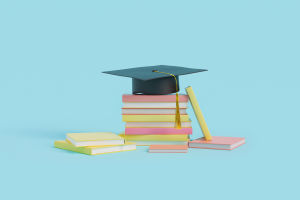Students need to carry a variety of stationery to school, not only to meet diverse classroom needs but also as a crucial step in developing good study habits.
In the learning process, there are many types of stationery, each serving a specific purpose.
For example, a regular pencil or ballpoint pen may seem simple, but it is essential for completing daily assignments, sketches, and class notes. Choosing the right writing tool not only enhances writing comfort but also helps students stay focused.
In addition to basic writing tools, students need to prepare other stationery items. Erasers and correction tape are commonly used supplies. When students make mistakes in their work, erasers allow them to correct errors, especially useful in drawing classes.
Correction tape is ideal for modifying ink marks, a convenient tool for keeping notes neat and clear. Some students also carry colored pencils, markers, or highlighters to mark important information during class, making notes more visually accessible for later review.
Students also need notebooks and various types of paper. Different subjects may require specific formats; for example, math classes often use grid notebooks for easier graphing and calculations, while science or art classes may require special sketch paper.
Notebooks not only serve as a primary medium for class notes but also help students develop organized thinking. They play a crucial role in organizing and recording daily assignments and exam topics. Some students choose notebooks with different covers or colors for each subject, allowing for quick differentiation and increased study efficiency.
Folders and binders are also essential stationery for students, especially for older students who rely on them even more. Folders help students organize and store materials efficiently—practice sheets, handouts, and exercise books for different subjects can all be neatly categorized.
The flexibility of binders allows students to adjust the order of pages as needed, aiding in systematic review and organization. For students who need to carry a lot of class materials, this method of organization can reduce their burden and improve study efficiency.
Additionally, today's students may need some tech-based stationery like calculators. Especially in high school, subjects like math and physics often require calculators for complex calculations.
Although calculators cannot replace a student's ability to do math, they allow students to focus on problem-solving rather than tedious calculations. Schools typically specify the type and function of calculators required, so students should select carefully.
Measurement tools like rulers, protractors, and compasses are also essential, particularly in subjects like math, physics, and geography, where these tools help students draw accurate shapes or measure angles. Some students may carry more specialized tools, such as geometry compasses and dividers, for use in lab or drawing classes.
Some schools also encourage students to carry a planner or schedule to better manage their time.
These small time-management tools help students organize their after-school hours, track assignments, and record extracurricular activities, gradually cultivating good time-management habits. This is essential in a busy academic life, allowing students to have a clearer sense of their progress, effectively enhancing efficiency.
Although carrying a variety of stationery may seem cumbersome, choosing the right stationery can enhance students' learning experience. In school, students often need to complete different tasks within limited timeframes, and efficient use of stationery can directly affect learning outcomes.
For instance, selecting the right highlighter can make important points stand out, and a well-organized folder can make class notes more orderly.
These small details may seem insignificant, but when students use these supplies in a structured manner daily, they gradually develop a sense of self-discipline and organization, which will positively impact their future academic journey.
Another function of carrying stationery is to foster students' sense of responsibility and independence.
When students organize their supplies daily, they gradually learn which items are essential, which are backups, and which are supplementary tools that enhance their learning. This process teaches students to understand how to plan and allocate resources wisely, fostering self-management skills from an early age.
Carrying a variety of stationery to school is not only to meet the demands of different subjects but also to help students develop good study habits and management skills. Although it may add to the weight of their daily backpacks, these supplies are valuable assistants in their learning journey.
By using stationery, students can improve their study efficiency, enhance self-discipline, and learn how to better manage their study resources, laying a solid foundation for future learning and life.


